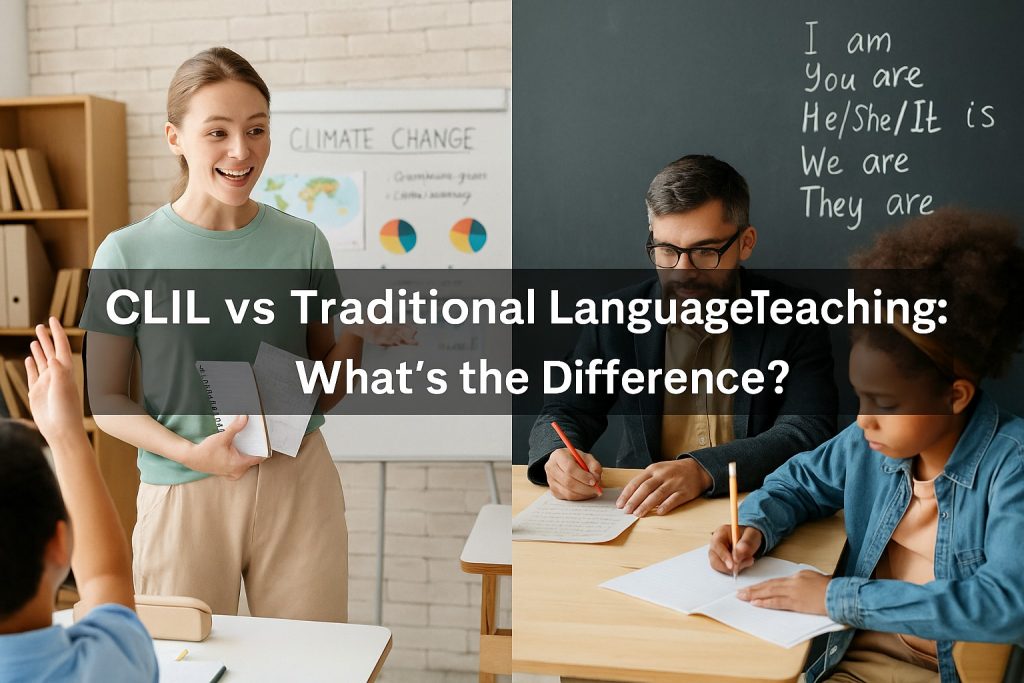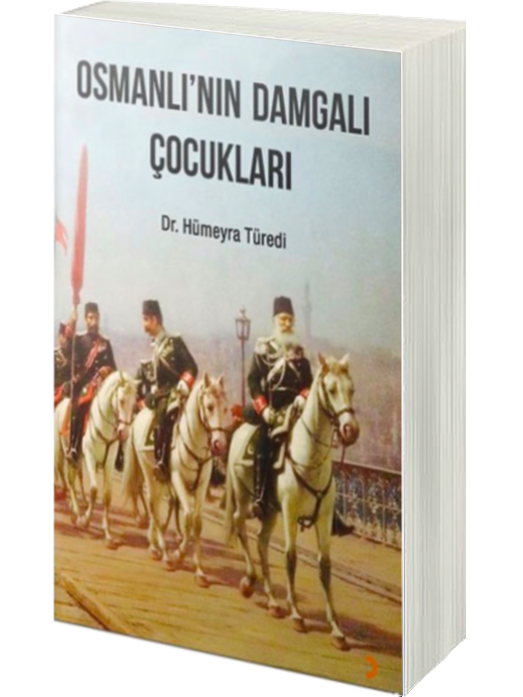
While traditional language teaching has long focused on the systematic study of grammar, vocabulary, and pronunciation, CLIL offers a fundamentally different approach. Instead of treating language as a separate subject, CLIL integrates language learning into the study of academic content, creating a more dynamic, authentic, and cognitively engaging experience for students.
In conventional language classrooms, the curriculum is often built around the mechanics of the language itself. Lessons are typically organized by grammatical structures, and practice often involves artificial dialogues, written exercises, or isolated drills. Although this approach can help students build a solid foundation in linguistic rules, it frequently lacks real-life relevance and context. As a result, many learners struggle to transfer what they know to authentic communication.
CLIL, by contrast, embeds language within meaningful subject matter. A CLIL lesson might involve learning about climate change in English, solving math problems using the target language, or discussing historical events through a second language. In this way, students do not just learn the language — they learn through the language. This creates a more immersive environment where language acquisition happens naturally alongside content mastery.
Another key difference lies in motivation and engagement. Traditional language classes can sometimes feel repetitive or disconnected from students’ interests. CLIL makes learning more relevant by connecting it to topics that students find stimulating or important. Whether exploring science experiments, creating art projects, or participating in classroom debates, learners are more likely to stay motivated when language use is linked to real actions and meaningful purposes.
Assessment approaches also differ. Traditional instruction often emphasizes accuracy — correct verb tenses, precise vocabulary, or flawless syntax. CLIL, on the other hand, encourages a more holistic perspective. Assessments may evaluate how well a student can use the language to explain a concept, complete a task, or collaborate with peers. This shift places greater value on functional communication than on grammatical perfection.
Moreover, traditional language teaching tends to follow a teacher-centered model, with the teacher delivering information and students passively receiving it. CLIL fosters more student-centered learning, where interaction, inquiry, and collaboration play a greater role. This aligns with essential 21st-century skills like problem-solving, critical thinking, and effective communication.
Ultimately, CLIL does not aim to replace traditional methods but to enrich and expand the possibilities of language education. By aligning language learning with real-world applications, it makes the process more meaningful and effective for students who need to use their language skills beyond the classroom.
Dr. Humeyra Turedi
References
- Mehisto, P., Marsh, D., & Frigols, M. J. (2008). Uncovering CLIL: Content and Language Integrated Learning in Bilingual and Multilingual Education. Macmillan Education.
- Richards, J. C., & Rodgers, T. S. (2014). Approaches and Methods in Language Teaching (3rd ed.). Cambridge University Press.
- Coyle, D., Hood, P., & Marsh, D. (2010). CLIL: Content and Language Integrated Learning. Cambridge University Press.
You can read the Turkish version of the article below.
CLIL ve Geleneksel Dil Öğretimi: Fark Nedir?
Geleneksel dil öğretimi uzun süredir dilbilgisi, kelime bilgisi ve telaffuzun sistematik bir şekilde çalışılmasına odaklanırken, CLIL temelde çok farklı bir yaklaşım sunar. Dili ayrı bir ders olarak ele almak yerine, CLIL dil öğrenimini akademik içerik çalışmasına entegre eder ve öğrenciler için daha dinamik, gerçekçi ve bilişsel olarak uyarıcı bir öğrenme deneyimi oluşturur.
Klasik dil sınıflarında müfredat genellikle dilin mekanik yapıları etrafında şekillenir. Dersler çoğunlukla dilbilgisel yapılara göre düzenlenir ve uygulamalar yapay diyaloglar, yazılı alıştırmalar ya da yalıtılmış egzersizlerden oluşur. Bu yaklaşım öğrencilere dil kurallarında sağlam bir temel kazandırabilir; ancak genellikle gerçek hayatla bağlantısı zayıftır ve bağlamdan yoksundur. Bu yüzden birçok öğrenci öğrendiklerini gerçek iletişime aktarmakta zorlanır.
Buna karşılık CLIL, dili anlamlı konulara gömerek sunar. Bir CLIL dersi, İngilizce olarak iklim değişikliğini öğrenmek, hedef dilde matematik problemi çözmek ya da tarihi olayları ikinci bir dille tartışmak gibi etkinlikleri içerebilir. Bu sayede öğrenciler sadece dili öğrenmez, dil aracılığıyla öğrenirler. Bu da öğrenmenin daha doğal ve etkili bir şekilde gerçekleştiği kapsayıcı bir ortam yaratır.
Bir diğer önemli fark, motivasyon ve katılım düzeyindedir. Geleneksel dil dersleri bazen tekrara dayalı ve öğrencilerin ilgi alanlarından uzak hissedilebilir. CLIL ise öğrenmeyi öğrencilerin ilgi duyduğu ya da önemli bulduğu konulara bağlayarak daha anlamlı hale getirir. İster bilimsel deneyleri keşfetsinler, ister sanat projeleri yapsınlar ya da sınıf içi tartışmalara katılsınlar; öğrenciler, dili gerçek amaçlara yönelik kullandıklarında daha motive olur ve öğrenmeye daha istekli yaklaşırlar.
Değerlendirme yöntemleri de farklılık gösterir. Geleneksel öğretim genellikle doğruluğa — doğru fiil zamanlarına, kusursuz sözcük seçimine ya da hatasız cümle yapılarına — odaklanır. CLIL ise daha bütüncül bir bakış açısını teşvik eder. Değerlendirmelerde öğrencinin bir kavramı dil kullanarak ne kadar iyi açıklayabildiği, bir görevi tamamlayıp tamamlayamadığı ya da akranlarıyla ne kadar etkili iş birliği kurabildiği ölçülebilir. Bu yaklaşım, dilde mükemmellikten çok işlevsel iletişim becerisine değer verir.
Ayrıca, geleneksel dil öğretimi genellikle öğretmen merkezlidir; öğretmen bilgiyi aktarır, öğrenciler ise pasif biçimde alır. CLIL ise öğrenci merkezli öğrenmeyi teşvik eder; etkileşim, sorgulama ve iş birliği ön plana çıkar. Bu yaklaşım, problem çözme, eleştirel düşünme ve etkili iletişim gibi 21. yüzyıl becerileriyle de birebir örtüşür.
Sonuç olarak CLIL, geleneksel yöntemlerin yerini almak gibi bir iddiada bulunmaz; aksine, dil eğitimini zenginleştirmeyi ve genişletmeyi amaçlar. Dil öğrenimini gerçek dünya uygulamalarıyla uyumlu hale getirerek, öğrenciler için daha anlamlı ve kalıcı bir süreç haline getirir. Özellikle dili sınıf dışındaki yaşamda kullanmaları gereken öğrenciler için bu yaklaşım çok daha etkili bir yoldur.
Kaynakça
Mehisto, P., Marsh, D., & Frigols, M. J. (2008). Uncovering CLIL: Content and Language Integrated Learning in Bilingual and Multilingual Education. Macmillan Education.
Richards, J. C., & Rodgers, T. S. (2014). Approaches and Methods in Language Teaching (3rd ed.). Cambridge University Press.
Coyle, D., Hood, P., & Marsh, D. (2010). CLIL: Content and Language Integrated Learning. Cambridge University Press.
Dr. Humeyra Turedi
You can read the Turkish version of the article below.
CLIL Programlarında Aile Katılımı: Neden Önemlidir?
CLIL (İçerik ve Dil Entegreli Öğrenme) hakkında konuştuğumuzda genellikle müfredata, öğretmen eğitimine ya da sınıf içi etkinliklere odaklanırız. Ancak çoğu zaman göz ardı edilen başka önemli bir unsur daha vardır: veliler. Bir çocuğun öğrenmeye, özellikle de ikinci bir dil aracılığıyla öğrenmeye karşı tutumu sadece öğretmenler tarafından değil, evde olup bitenlerle de şekillenir.
CLIL, çoğumuzun yabancı dili öğrendiği klasik yöntemlerden farklıdır. Bu yüzden birçok veli, çocuğunun fen ya da matematik dersini İngilizce (veya başka bir hedef dilde) gördüğünü duyduğunda doğal olarak başta biraz tedirgin olabilir. Endişelenmek normaldir: Acaba çocuğum ders içeriğinde geri mi kalacak? İki dil arasında geçiş yapmak onu zorlar mı? gibi sorularla karşılaşılır. Bunlar yerinde sorulardır. Bu nedenle okul ile aileler arasında açık ve dürüst iletişim çok önemlidir.
Veliler CLIL’in nasıl işlediğini bildiklerinde, öğrenme sürecine dahil olmaları ve gerçek anlamda birer öğrenme ortağı haline gelmeleri çok daha olasıdır. Küçük şeyler büyük fark yaratır — ödevlerde yardımcı olmak, çocuklarını yeni dili evde kullanmaya teşvik etmek ya da sadece ilgi göstermek. Belki birlikte İngilizce bir doğa belgeseli izlemek, iki dilli bir hikâye kitabı okumak ya da çocuğunuzun merak ettiği bir konuyu onunla tartışmak… Bu ortak anlar çocukların özgüvenini artırır ve öğrenmeyi sınıfın ötesinde anlamlı kılar.
Bu noktada öğretmenlere de büyük görev düşer. Okulların, bir CLIL dersinin nasıl göründüğünü, öğrencilerin ne tür dil desteği aldığını ve gerçekçi beklentilerin neler olduğunu ailelere açıklaması çok önemlidir. Veli toplantıları, bültenler, okul etkinlikleri ve hatta kısa atölyeler, velilerin süreci daha iyi anlamalarına ve kendilerini güvende hissetmelerine yardımcı olabilir. Aileler sürece dahil olduklarında ona güvenirler — ve çocuklar da bu güveni hisseder.
Çok kültürlü sınıflarda aile katılımı daha da anlamlı hale gelir. CLIL doğası gereği farklı dil ve kültürlere saygı duyar ve tüm öğrencilere eşit öğrenme imkânı sunar. Okullar, başka diller konuşan velilere ulaşmak için fazladan çaba gösterebilir — örneğin, toplantılarda çeviri desteği sağlamak ya da bilgilendirme materyallerini çok dilli sunmak gibi. Bu tür yaklaşımlar her aileye kökeni ne olursa olsun aidiyet hissi kazandırır.
CLIL’in en güzel yanlarından biri, dili gerçek yaşamla ilişkilendirmesidir. Çocuğunuza destek olmak için İngilizceye (ya da hedef dile) tam anlamıyla hâkim olmanız gerekmez. Onlara göstereceğiniz teşvik, merak ve ilgi zaten en büyük katkıdır. Okullar da bu süreçte yardımcı olabilir; örneğin, iki dilli sözlükcükler, kısa videolar ya da pratik öneriler gibi basit araçlar sunarak velilerin dışlanmış hissetmesini önleyebilirler.
Bazı okullar bu katılımı daha yaratıcı yollarla da teşvik eder. “CLIL Açık Kapı Günleri” düzenleyip velileri derse davet ederler, aile atölyeleriyle herkesin birlikte öğrendiği etkinlikler yaparlar ya da evlere gönderilen CLIL etkinlik kutularıyla oyunlar, kitaplar ve küçük projeler sunarlar. Tüm bunlar yalnızca çocukların öğrenmesine değil, velilerin CLIL’in nasıl işlediğini daha iyi kavramalarına da yardımcı olur.
Günün sonunda, aile katılımı sadece hoş bir katkı değil; her CLIL programı için gerçek bir başarı ayağıdır. Veliler, öğretmenler ve öğrenciler birlikte çalıştığında çocuklar daha fazla desteklenmiş, daha motive ve her iki dili kullanmada daha özgüvenli hisseder. Verilen mesaj nettir: Öğrenmek değerlidir, mümkündür ve hem okulda hem evde kutlanması gereken bir süreçtir.
Kaynakça
Mehisto, P., Marsh, D., & Frigols, M. J. (2008). Uncovering CLIL. Macmillan Education.
Hornby, G. (2011). Parental Involvement in Childhood Education: Building Effective School-Family Partnerships. Springer.
Lasagabaster, D., & Sierra, J. M. (2009). Language attitudes in CLIL and traditional EFL settings. International CLIL Research Journal, 1(2), 4–17.
Henderson, A. T., & Mapp, K. L. (2002). A New Wave of Evidence: The Impact of School, Family, and Community Connections on Student Achievement. Southwest Educational Development Laboratory.
Piller, I. (2016). Linguistic Diversity and Social Justice: An Introduction to Applied Sociolinguistics. Oxford University Press.



